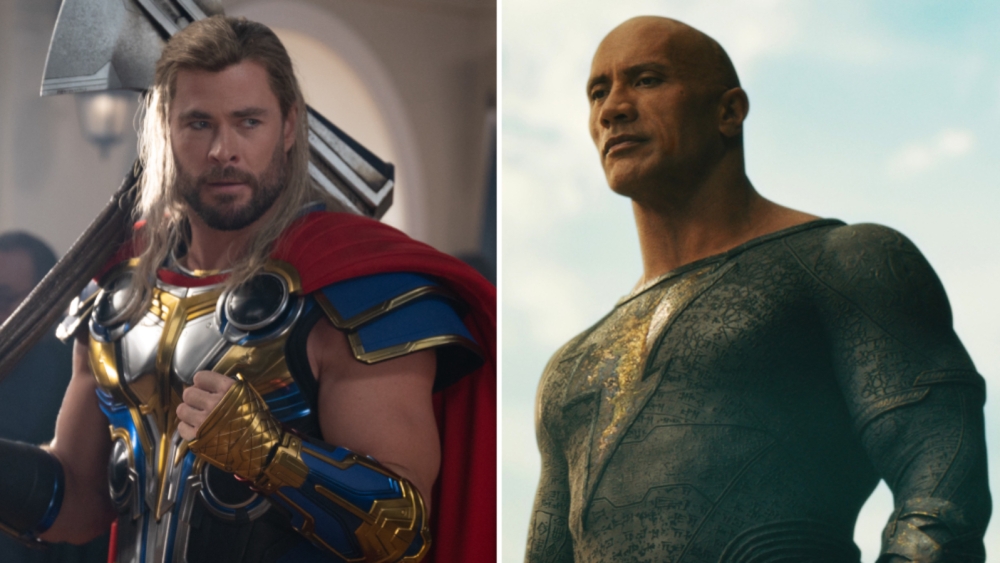Over one-third of Marvel fans feel fatigued from the constant stream of content served in theaters and on Disney+ this year, according to a new study released on Thursday by the fan platform Fandom. But the study also shows that Marvel fans are also far more inclined to watch any Marvel project in comparison to DC fans, who in turn are more likely to consume film and TV about a specific superhero rather than the entire DC catalogue.
Those are a few of the extensive findings in the study, which drew from a survey of 5,000 entertainment and gaming fans between 13 and 54 years old, as well as what Fandom terms “proprietary insights” from its platform of over 300 million monthly users across 250,000 different wikis.
The most intriguing assertion of the study is that fans can be broken down into four subcategories of roughly descending order of intensity.
The Advocates: They are the core fan base, described as “deeply invested in the IP,” so much so that it’s “part of who they are.” They are most likely to watch content within the first few days of its release. Some franchises with a high number of Advocates include Marvel, “Rick and Morty,” “Harry Potter,” DC, “Star Wars,” and “Stranger Things.”
The Intentionalists: These fans — which on average make up the largest segment of a franchise’s fan base — are more discerning, influenced by marketing and strong reviews, storytelling themes, and actors and filmmakers behind the projects. They’ll most likely watch within the first two weeks. Franchises with a high number of Intentionalists include “The Sex Lives of College Girls,” “Breaking Bad” and “Better Call Saul,” “The Handmaid’s Tale,” “Game of Thrones” and “Only Murders in the Building.”
The Culturists: They are “heavily influenced by the buzz” surrounding a popular release, and see watching as an opportunity to connect with friends and family, as well as the larger cultural conversation. They’ll most likely watch within the first month. Franchises with a high number of Culturalists include “Chicago Fire,” “Ted Lasso,” “True Detective,” “The Challenge” and “It’s Always Sunny in Philadelphia.”
The Flirt: As the name implies, these are the dabblers, who are most interested in entertainment they can “come in and out of” and “will allow them to find common ground with others around them.” They’ll most likely watch when they have the time. Franchises with a large number of Flirts include a large number of legacy shows like “The Office,” “SpongeBob Squarepants,” “Gilmore Girls, “South Park” and “Friends,” as well as reality shows like “The Bachelor” and “Real Housewives.”
“The words ‘fan’ and ‘super fan’ are used constantly to describe consumers of entertainment, but those terms are too generic for today’s entertainment world — fandoms are complex,” says Fandom CMO Stephanie Fried in a statement. “Understanding the layers of fan identity and authentically connecting with them at the right time and right place will be key for marketers looking to maximize success across streaming, theatrical and video game releases.”
Having more Advocates and Intentionalists in a fandom, as Marvel (with 66%) does over DC (with 61%), can be an advantage for a franchise — but it’s not quite that cut-and-dried. According to Fandom’s study, 81% of Marvel fans would watch anything released in the franchise, while 67% of DC fans would do the same. Conversely, just 38% of Marvel fans say they’re focused on specific superheroes rather than the entire Marvel Cinematic Universe, compared to 57% of DC fans who care more about one or two superheroes rather than the full DC Universe. That could a major factor in why only 20% of DC fans say they’re fatigued by the number of releases in a year, versus 36% of Marvel fans who feel that way. Through September, Fandom reports that “The Batman” was the global site’s “largest cinematic release.” DC fans are also more 20% more likely than Marvel fans to buy products — collectables, clothes, even superhero-inspired menu items.
Fandom’s overall supposition is that, on average, roughly half of a franchise’s potential fan base is made of up Culturalists and Flirts, suggesting that marketing that can engage those fans can further expand a franchise’s reach, especially for original projects that aren’t part of pre-established IP.
“Reaching consumers in an impactful way is not a one-size-fits-all formula,” says Perkins Miller, CEO of Fandom. “Understanding the spectrum of fan identity and how it affects fan behavior has never been more critical across the ever-expanding entertainment landscape.”
From Variety US




































